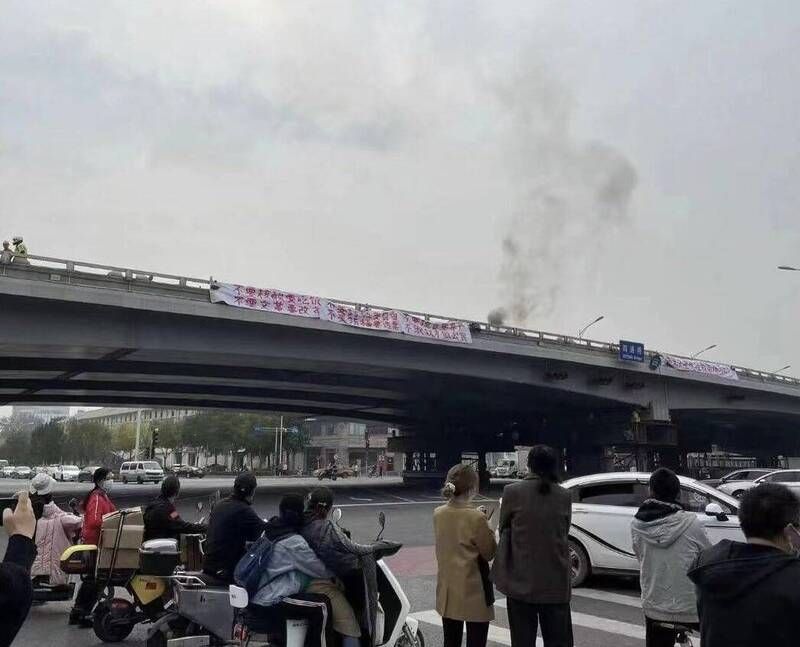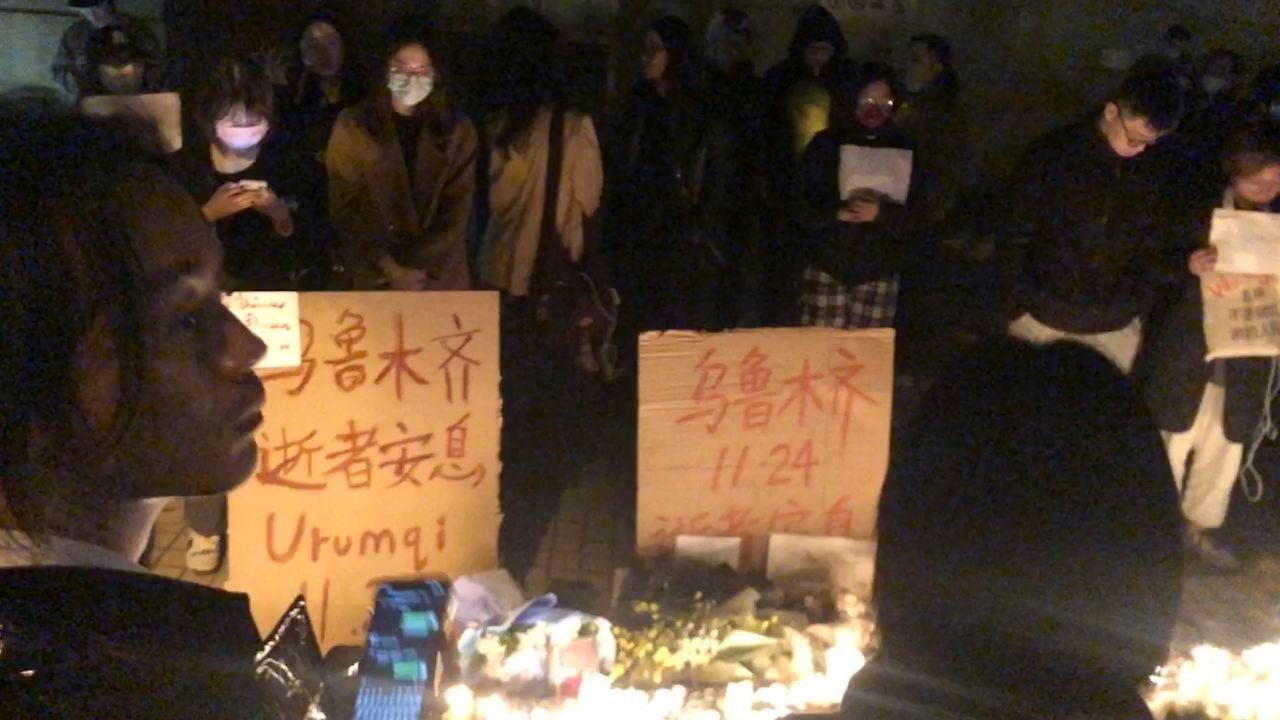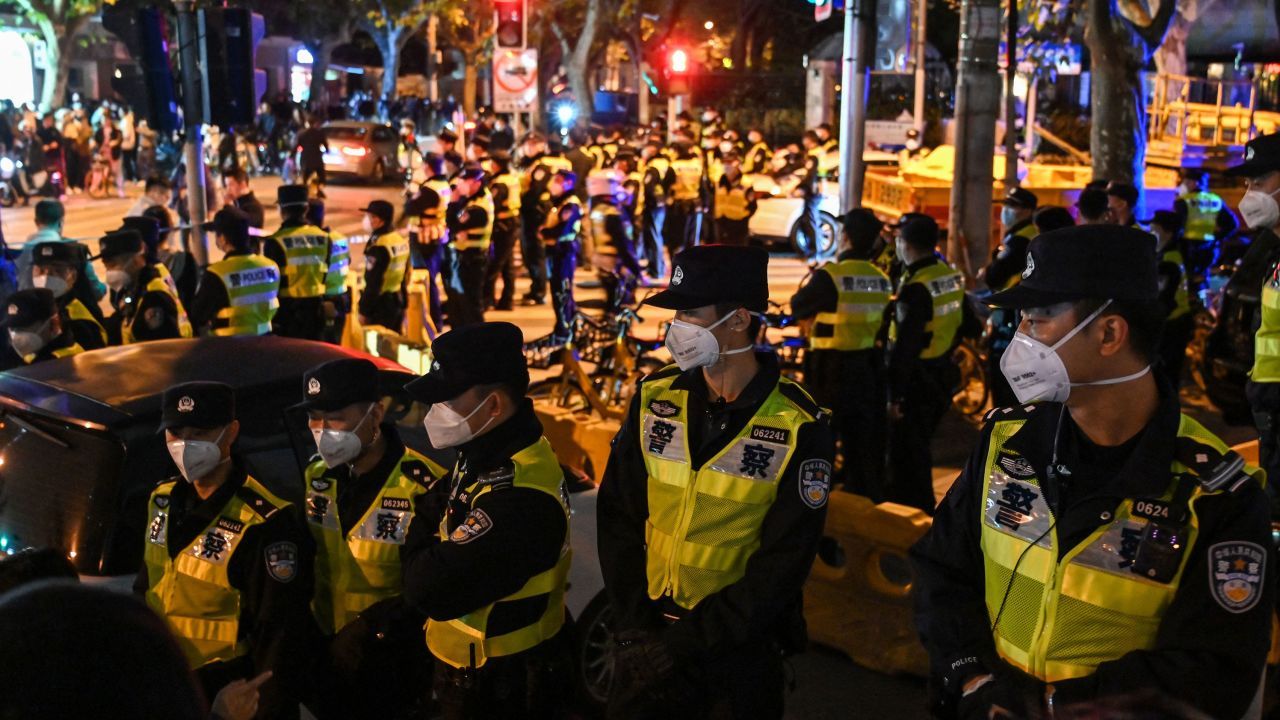
Web3、AI、人文歷史、女性主義、哲學、全部包起來的人。 ⚡鏈閃 BD/小編 ,創了一個讀 bar,可以進來一起玩! 與我相關:https://linktr.ee/jeffrey0102
China's anti-epidemic lazy bag──Linear timeline review
This article reviews a series of major events related to China's epidemic prevention since September. If there are any omissions, please make up for them!
September 30th - The struggle between the two central roads, cleared or opened.
Chinese Premier Li Keqiang talked about "reform and opening up" three times on the same day during the "Eleventh" period. This move was interpreted by experts as a conflict and contradiction with Xi Jinping's basic national policy direction, which means that there is a certain degree of disagreement within the Communist Party . In other words, Chinese officials are choosing sides for the future whether it is closed (clearing zero) or open (reform and opening up).
October 13th - The Brave at Sitong Bridge Appears
A man hung up slogans such as "Strike, strike, recall national traitor Xi Jinping", "Don't nucleic acid, eat, don't Cultural Revolution, reform" and other slogans on the Sitong Bridge in Beijing . All photos and videos related to this person are currently blocked on Chinese social media. Pro-democracy activist Wang Dan even called the man a new contemporary "tank man".

After the incident, the Beijing authorities began to censor all kinds of relevant information on the Internet. In addition to various key slogans, they also included "Sitongqiao", "Beijing", "Brave Man" and so on. Chinese Foreign Ministry spokesman Mao Ning even said at a press conference on Friday that he was not aware of the so-called protests. In addition, QQ Music also banned related songs, such as "Sitong Bridge" sung by the Chinese Orchestra, Caodong's "Brave Man" and Eason Chan's "Lonely Brave Man".
October 16──Two routes become one route──Clearing into mainstream discourse
- emphasis on eradicating poverty
- Let Hong Kong change from turmoil to an orderly society
- When discussing the epidemic, it is believed that the party and the state put the lives of the people above all else
- A renewed commitment to "shared prosperity"
- China must speed up its armed forces to prevent disturbances in the international situation
Secondly, the entire speech is full of shadows of the United States, including his mention that China should be self-reliant. This statement is regarded as a response to the restrictions imposed by the United States on Chinese high-tech products in the past few days. At the same time, he also re-emphasized that he will not give up the reunification of Taiwan by force.
Scholars said that Xi Jinping's speech at the 20th National Congress of the Communist Party of China used "struggle" instead of reform, and "security" instead of openness . His speech is almost the same as his past ruling line. Scholars believe that this uninspiring speech indicates that authoritarian rule is gradually turning to solidified totalitarian rule.
October 26 - sporadic protests in various places continue
Large-scale protests broke out in Tibet due to the epidemic lockdown. Residents of Lhasa took to the streets to confront police in white. Due to the large number of people, it is not ruled out that there will be large-scale violent conflicts, which may even cause dangerous situations such as shootings.
November 5th - Proclamation again that the zeroing policy will not waver
After the 20th National Congress of the Communist Party of China, it was reported that China’s so-called “dynamic clearing” policy will be shaken. Recently, Mi Feng, spokesman of China’s National Health Commission, said that this policy will never be shaken . Some officials said that China’s The epidemic prevention measures are completely correct and the most cost-effective. According to reports, the current view of the outside world is that it is necessary to observe whether China is advocating "dynamic zeroing" but actually adopts partial loosening measures in various places.
It seems difficult for the outside world to predict exactly how the epidemic will spread in China. In addition to the authorities still emphasizing the "zero-clearing policy," they are also blocking the spread of news through continuous media blockades.
The large-scale evacuation of Foxconn employees in Zhengzhou and the incidents circulating on social media about "Xiaobai" beating people or a child in Lanzhou being poisoned by carbon monoxide because of being detained in a quarantine station have repeatedly reminded the world of the continuous spread of the epidemic in China and the Epidemic prevention policies with continued sluggish management efficiency.
November 11th - The new epidemic prevention policy was released, cleared and shaken?
The Chinese government has issued more than 20 anti-epidemic measures , including the change from 7+3 to 5+3 for immigrants. And such a change seems to be different from the policy that officials stated a few days ago that they will "unswervingly" dynamically clear zero. According to the analysis of scholars , the CCP has lost the ability to "correct mistakes", and epidemic prevention has become a political task rather than a livelihood task. Against this background, the epidemic in China continues to spread.
November 23 - Foxconn - Anti-epidemic conflict triggered by labor issues
More outbreak-related restrictions have been imposed across China in hopes of stemming the rising number of infections. However, this move has exacerbated investors' concerns about the country's economy. For example, Foxconn, the world's largest iPhone production site, is suffering losses due to this policy.
According to footage released so far, some Foxconn workers are confronting government officials in protective suits and shouting "Give me my wages."
The incident broke out because the newly hired employees of Zhengzhou Foxconn were dissatisfied with the employer's employment contract and the corresponding isolation conditions, so they tried to break through the epidemic prevention blockade. These workers trying to break through the blockade should have walked out of the blockade peacefully like the previous "Great Escapes" , but this time they encountered a large-scale blockade by the police, which even caused conflicts between the two sides.
It is speculated that the outbreak of this conflict may be because the largest iPhone production plant "cannot do without Foxconn" for the financial situation of Zhengzhou and the Chinese government. In addition to causing serious blows to the Chinese economy, if the Chinese economy slows down, it will have an impact on surrounding countries such as Japan, South Korea, Australia and other countries. According to analysts, China will face the most severe situation in the next few weeks.
November 26th - The fire in Urumqi, connecting sparks across the country
A fire broke out in an apartment in Urumqi, Xinjiang , killing ten people and injuring nine others. According to reports, the fire lasted for three hours, burning all the way from the 15th floor to the 17th floor, and thick smoke filled all the way to the 21st floor. It was circulated on the Internet that the fire truck was blocked by the anti-epidemic tent and could not enter the place where the fire was fierce. Secondly, there are also circulating videos showing that due to the lockdown, the escape door was locked with wire by epidemic prevention personnel, making it impossible to escape. However, a follow-up press conference hosted by the Urumqi government stated that the city is a low-risk area, so residents can move freely.
On the evening of the same day, a series of demonstrations took place in Shanghai, Urumqi and other places.

November 27
A series of protests broke out in Beijing, Xinjiang and other places , while mourning for the citizens who died in Urumqi. The video, confirmed by Reuters, shows the citizens of Urumqi singing the Chinese national anthem "Get up! People who don't want to be slaves!" while another part of the people shouted "Unblock!"
Experts pointed out that the official reporters after the fire in Urumqi made people think that the government was accusing the people of their inability to save themselves, thus further arousing public resentment. As a result, people began to issue more sharp accusations against the government's anti-epidemic policies, and were cautious about obeying orders.
November 28 - The Blank Paper Uprising
The extremely rare large-scale protests in China blossomed throughout the weekend. Citizens, including college students, protested the CCP's epidemic prevention policies in various places, and even pointed out the problems of the CCP regime. The fuse this time is a fire that killed 10 people in Urumqi, the capital of Xinjiang, on Thursday.
One after another, "blank paper uprisings" occurred in various parts of China. Some students were arrested by the police just by holding up the blank paper, or took away the blank paper. Blank paper──"You know what I'm going to say."
The protests stretched from Beijing to Shanghai, where people gathered to mourn the dead citizens of Urumqi. In addition, there have been moves to remove epidemic prevention obstacles in various places, protesting against the endless epidemic prevention policies.
In addition, waves of Chinese protests have also appeared in major neighborhoods abroad. These include France, the United Kingdom, the United States, Canada and other regions.


As far as the central government is concerned, it can be seen that after the 20th National Congress, not only Xi Jinping's power has been consolidated, but the epidemic prevention policy of the CPC Central Committee has also been consolidated. Epidemic prevention is no longer an issue of people's livelihood, but a political issue. At the same time, the CCP has lost the ability to correct mistakes and cannot respond to various improvement suggestions put forward by the people. As long as there is any speech that is contrary to the central epidemic prevention policy, it will be blocked, which has caused public opinion to ignore it for a long time. When the public grievances accumulated to a certain extent, they broke out through the Foxconn and Urumqi fire incidents.
As far as the Internet is concerned, various anti-government speeches and various creative satirical articles have rarely appeared on China's Weibo, WeChat, Douyin and other platforms, which can be said to be unprecedented. The extension of online speech is very important to the wave of protests in China, and the circulation and connection of information is crucial to the formation of resistance alliances.
Although this protest has blossomed everywhere, it may be that only a small number of students are appealing to the opening of political rights, including "Xi Jinping step down", "Communist party step down", "no tenure", "freedom of speech", "freedom of the press", etc. . Most of the protests in other places continue to demand the unblocking, but it remains to be seen whether this protest will go straight to the bottom line of the CCP.
In addition, this large-scale protest made most Chinese people see the power of mass gathering. This kind of large-scale crowd gathering is rare in China, and it occurs in all provinces at the same time. In the past mode of protest, large-scale mass gatherings will inevitably lead to conflicts and tensions between the police and the people, which in turn will lead to the continuous spread of public grievances.
From breaking through the blockade in the community to the Foxconn worker wave to the fire in Urumqi, the pressure accumulated by the Chinese people finally broke out, but how long the outbreak will last and how far the bottom line of the CCP will be trampled are things that can be observed later. The irony is that the Chinese are now holding the Chinese Constitution, carrying the national flag, and singing the national anthem to protest, which has great appeal and appeal
Perhaps the biggest difference between this protest and the previous ones should be the large-scale connection (from citizens, workers to students), and the protests directed at the bottom line of the CCP.
This article refers to news sites: Ruters, AP, CNN, DW, rfa, The Economist, Central News Agency, New York Times
Like my work?
Don't forget to support or like, so I know you are with me..
Comment…